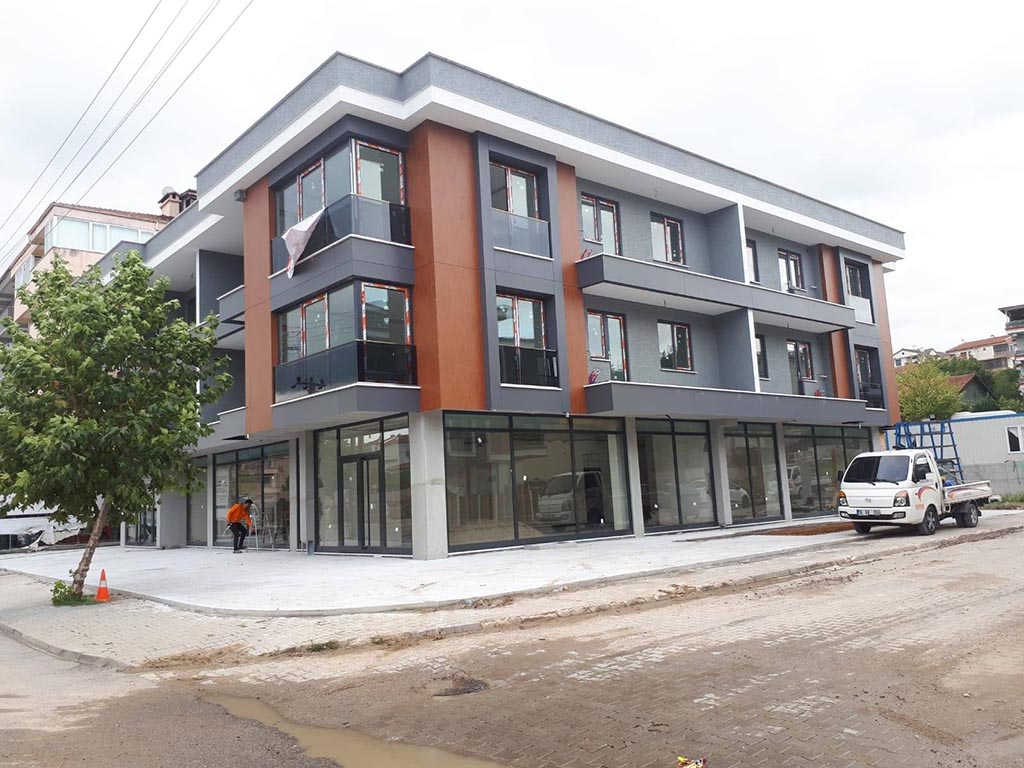Why PVC, Why Winsa?
PVC windows have proven their reliability with scientific researches; It has become one of the most suitable options for consumers with its insulation, durability, maintenance and high strength values.

Why PVC?
The most prominent materials in window manufacturing are wood, aluminum and PVC. Although wood can give good results in terms of insulation, it cannot be preferred much because it requires constant maintenance, can be deformed quickly and its cost. Aluminum, on the other hand, is not very advantageous due to its high strength, low insulation and high cost.
PVC windows, on the other hand, are the most preferred material because they have good insulation, do not require maintenance for many years, can reach high strengths with appropriate design and support elements, and have a lower cost than wood and aluminum.
In the past, there were very contradictory discussions about PVC as a production material. However, scientific research shows that PVC has become a material that contributes to sustainable development with modern production methods and processing standards. This is particularly suitable for windows made of PVC profiles.
Important information about PVC in the window industry;
Only 4% of the world’s gas and oil reserves are used in plastic production, and only 1% of these are used for PVC. 40% of all gas and oil reserves in the world are used in heating and providing energy to buildings.
The main component of PVC is chlorine obtained from rock salt and crude oil corresponds to only 43% of the material.
PVC windows are at the top of their class in eco-balance and eco-efficiency analysis.
New PVC windows offer a service life of over 50 years.
PVC producers have certain commitments regarding environmental issues, ecological and sustainable production processes.
The PVC content of the windows is recycled to produce PVC granules and can be used in the construction of windows at least seven more times.
What Are The Advantages Of PVC Windows?
PVC windows have a very good cost / benefit ratio.
PVC windows offer significant cost advantages both in purchase and throughout their lifetime. Wooden frames are approximately 20-30% more expensive than PVC profiles, and aluminum windows represent the most expensive alternative, being 30% more expensive. Considering its high energy saving potential and the minimum maintenance requirement throughout its lifecycle of over 50 years, savings are also achieved in the long term.
PVC windows are easy to maintain.
Quality PVC windows are extremely easy to maintain and require minimal maintenance. On the other hand, wooden windows need to be replaced approximately every two years and painted every 5 years. The state-of-the-art PVC granule is extremely resistant to weather conditions and light resistant. Due to the easy maintenance properties of the smooth profile surfaces, the only thing you will need to clean the window frames is dishwashing liquid.
PVC windows are remarkably durable.
Unlike wooden windows, PVC windows have a particularly long lifetime. Quality windows stand out with their resistance to deterioration and their high level of functionality for many years. Considering their long lifetime of at least 50 years, PVC windows are also an excellent investment in preserving the value of the building.
PVC windows have an excellent eco-balance.
PVC windows are 100% recyclable and therefore save resources. 40% of all gas and oil reserves in the world are used in heating buildings and providing energy to them, while only 4% of them go to plastic production, and only 1% of this figure is used in PVC. In addition to being recyclable, the durability and low pollution levels of PVC profiles contribute to the protection of the environment by helping to create an excellent eco balance. PVC windows have a much longer life compared to wooden windows and consume significantly less energy in the production process.
Comparison of Pvc and Aluminum Profile Performances in Terms of Carbon Footprint
When the U (Heat Conduction Coefficient W / (m2.-K) values are compared with respect to the profile section, the best result is PVC profile. Aluminum profiles have a high U value because they are metal.
Carbon footprint: It is the measure of the damage caused by human activities to the environment in terms of the amount of greenhouse gas produced, measured in unit carbon dioxide (CO2). Carbon Footprint calculates the amount of greenhouse gas emission that occurs due to a business or an activity and which commonly expresses the global warming potential. The CO2 equivalent is measured in kilograms or tons.
In the study, the carbon footprints of PVC and Aluminum window profiles were calculated and compared. When the carbon footprint of the PVC window profile is 248.8 kg CO2, the carbon footprint analysis of the aluminum profile has increased to 486.0 kg CO2. The carbon footprint of the aluminum window profile is 2 times higher than the PVC profile. In addition, the thermal performance of PVC profiles is superior. The good performance of PVC profile has resulted in it being a preferred material for window production.
In the results of working; Considering the energy performance and even other performance indicators such as energy, thermal performance and structural performance throughout the product life cycle, it has been proven that PVC window profiles should definitely be preferred in sustainable design.
Why Winsa?
Winsa, respect for nature, the importance given to innovation, is a leading and recognized brand in many countries of the world, not only in Turkey, given the value and quality to the customer. As Winsa, we know our responsibilities towards our world and we produce the right solutions in terms of both functional and energy saving with countless alternatives in our product range.
Adopting the approach of P (people), P (planet), Q (quality), S (service), P (profit), Winsa determined its value priorities in the order of Human> Environment> Quality> Service> Profitability and took care of institutionalization in this way. With these priorities, we combined high quality understanding with product design and color options that meet all the needs of modern buildings.
Winsa offers unlimited solutions for different customer requests.
Winsa Is Committed To Sustainability
Winsa pays special attention to the environment and the future. It effectively supports the recycling of plastic and the reasonable and sustainable use of PVC.
Only lead-free stabilizers are used in the production of our profiles.
Our solutions perfectly demonstrate how intensive research and years of experience have led to the development of future-proof PVC systems for windows and doors.
Our systems are simple to manufacture, they allow direct processing and are extremely easy to maintain.

